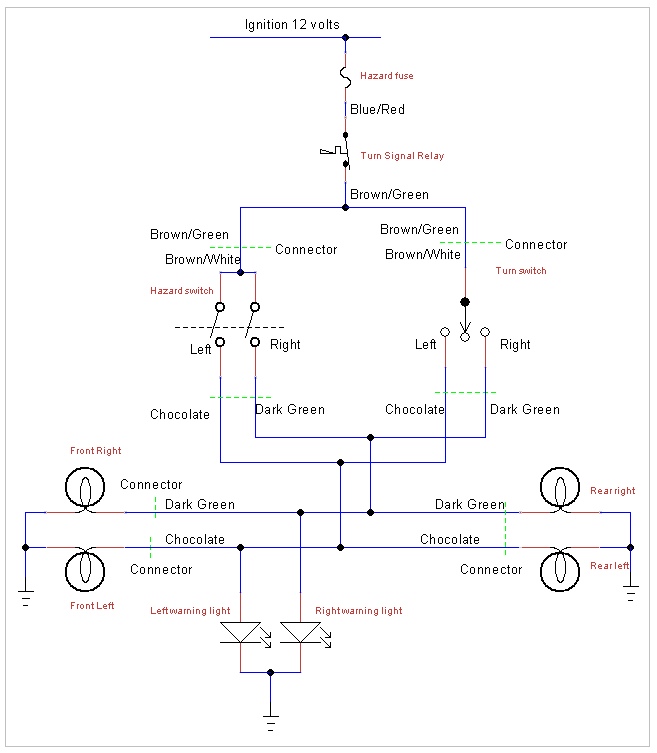T120TT
T120TT
My 2006 AE suddenly developed a problem. It immediately blows the 10 amp turn signal fuse anytime I try to use the turn or hazard signals. Also, when the fuse blows with the engine running, the engine exhibits an instantaneous slight stumble as the fuse blows. The problem appeared suddenly regardless of whether the engine is running or not. I haven't made any recent mods. When I disconnected the turn signal relay, the fuse stopped blowing. Could a defective turn/hazard signal relay cause this? Seems highly improbable to me. The bike has only 8500 miles. All the factory recalls have been done {ignition switch, high altitude ECM, S4 spider ground jumper harness} long ago. No spiders appear defective, but I removed the S6 spider and soldered together as a preventative measure after the fuse blowing problem began. I've had highway blaster horns installed for several years. The bike starts and runs normally except for the engine stumble {very slight} The gages work fine as do the lights, except for the turn/flasher signals, of course. No codes. Problem not correlated with any recent mods. Any ideas? Thanks.































































